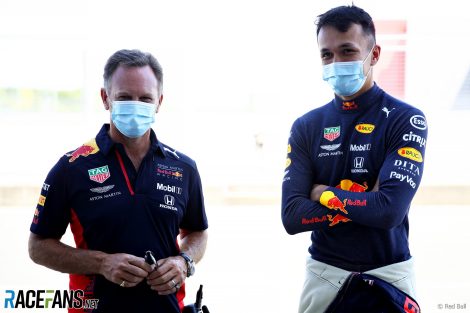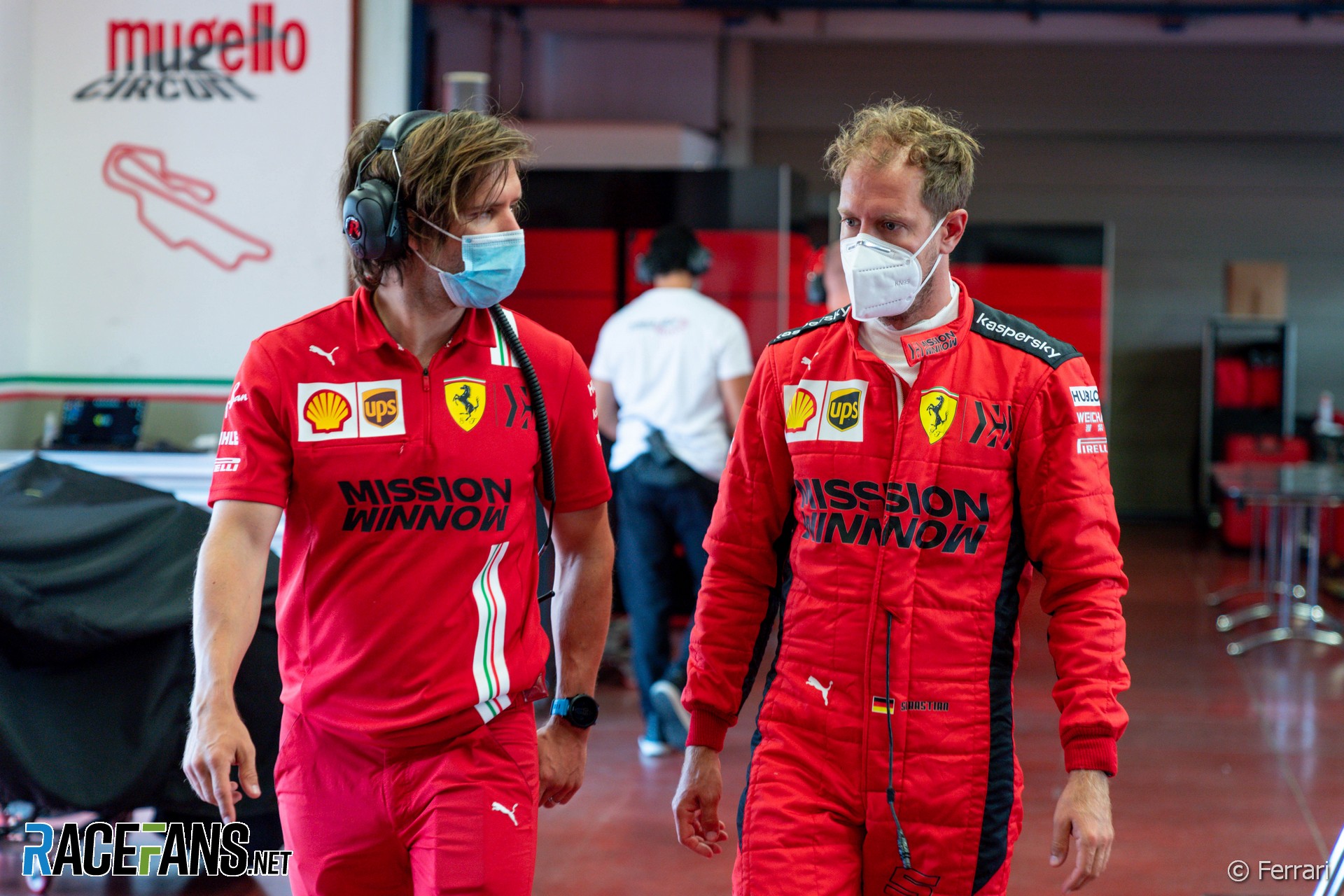Three months ago Formula 1 cancelled what should have been its season-opening race in Australia after a paddock member contracted Covid-19.
Nine more races were also called off. But the much-delayed season is finally due to begin one week from today, when first practice commences at the Red Bull Ring.Formula 1 has devised many changes to its working practices in order to limit the possibility someone could spread Covid-19 around the paddock.
“It’s been three months of very intense work together with the FIA, with F1, with the other teams and with the organisers through F1 to be able to be in a position where we are discussing returning back to racing, especially in the context of an international event,” said Ferrari’s sporting director Laurent Mekies.
The most obvious change is that races will be ‘Closed Events’ – F1’s terminology for races held behind closed doors.
“The first thing is that we are expecting to have no spectators, no guests, no sponsors, nobody that is not crucial to the running of the event,” said Mekies. “This means as well, unfortunately, a very limited number of media.

The paddock will look much more sparse compared to typical race weekends.
“The fact that we have no spectators, no guests, no sponsors et cetera, and very limited media also means that you will see no hospitality, no motorhomes at the race track. So it’s going to be a big change for all of us. But again it’s one of the measures that was needed to make sure that we keep the number as low as possible.”
Advert | Become a RaceFans supporter and
As the president of the FIA medical commission explained in an interview with RaceFans last month, F1 teams will remain within their own ‘bubbles’ during race weekends.
“Inside the bubble of the Formula 1 paddock you will have each individual bubble for each team, with pretty much no or minimal interactions between a bubble or team and another.

Ferrari will also divide the two halves of its garage – for Sebastian Vettel and Charles Leclerc’s SF1000s – into two separate bubbles of its own. Mekies expects other teams to do the same.
“So you will have probably the car 16 bubble and the car five bubble and inside them probably engineers and mechanics and so on and so forth and so on.
“Why? In order to be as rigid as possible: If, unfortunately, there is a positive case, in order to ensure that the number of people that came into contact with that individual is as minimal as possible.”
However separate bubbles within teams will not be enforced by the regulations. There may be occasions where teams are tempted to let the two sides of the garage mix: For example, if a power unit change needs to be completed at short notice.
Advert | Become a RaceFans supporter and
“It’s not a regulation, you are not forced into doing bubbles, you are forced into operating your team as a bubble. The fact that we go and assign sub-bubbles inside it is our responsibility. We do it, as we say, to be as resilient as possible in case of a positive case.”
Racing Point technical director Andrew Green recently indicated power unit changes could take twice as long with staff having to wear protective equipment. This could create a temptation for teams to speed up the process.
“If we need to break a sub-bubble to go after an operational need like [a power unit change], we can perfectly do it,” said Mekies. “What it means is that as a team, we will be a bit less resilient in case one of these persons will unfortunately be positive in the same process. It’s a decision that we can take in autonomy.”

“Of course there will be a number of increased cleaning operations,” Mekies added. “There will be a tracing app or diary being kept in order, again, to be as resilient as possible if there is a positive case.”
One occasion when team staff members unavoidably have to congregate is during pit stops, which typically involve more than 20 mechanics at a time. Mekies says observing the Covid-19 protocols shouldn’t make a significant difference to these because most of the reduction in staff at the track will involve non-technical team members.
“We have a limit already, about 60 operational people, so call it technical people including mechanics, engineers, et cetera. This 60 isn’t changed. What has changed is that we now have an overall limit which was not there before, of 80 people total. So we have to cut mainly non-technical people and as a result the pit stop operations, engineering operations, are not so much affected.
“They are a little bit affected because, as shall I say a common global responsibility, we have tried to take as little people as possible at the race track, regardless of the limits. But overall, you will not see a big change in the number of people involved in pit stop operations.”
Go ad-free for just £1 per month
>> Find out more and sign up
Like other teams, Ferrari will have a pool of people at its factory ready to fly in and replace any staff who have to be removed due to positive Covid-19 tests. All staff will be instructed to minimise their interactions outside of the event.

Mekies believes the biggest challenge arising from the restrictions will be carrying out routine race weekend procedures while having to wear protective equipment for long periods.
“I think in a very basic way the biggest challenge, especially for the guys in the garage, will be to wear the mask pretty much at all times,” he said. We are starting to get used to it, all of us now, because it’s becoming part of our normal life.
“Here in Ferrari, even though I’m not wearing it for the purpose of this [interview], it’s compulsory. So we wear it at all times in the factory and in the office.
“But it’s one thing to wear it in an office environment, it’s something else to wear it when it would be 40 degrees or very hot at the race track. So we think this will be the biggest challenge to the guys. All credit to all the medical and first help persons that are used to it and are wearing it on a regular basis every day of their working life.”
2020 F1 season
- Pictures: Wrecked chassis from Grosjean’s Bahrain fireball crash to go on display
- Bottas vs Rosberg: Hamilton’s Mercedes team mates compared after 78 races each
- F1 revenues fell by $877 million in Covid-struck 2020 season
- Hamilton and Mercedes finally announce new deal for 2021 season
- F1 audience figures “strong” in 2020 despite dip in television viewers





Jimmi Cynic (@jimmi-cynic)
26th June 2020, 19:53
F1 has always been comfortable living in its own bubble. Except perhaps the smaller teams on the bubble.
Stephen Crowsen (@drycrust)
26th June 2020, 20:35
It’s good to hear of contingency measures like these. Hopefully no one will be found to be infected, but I don’t think we’ll get to the end of the season with no further infections. So, using the Boy Scout motto, “Being Prepared” is essential.
I’m not sure I agree with having 20 people doing wheel changes on a car, but I don’t know what the alternative would be. I guess it isn’t an issue if no one has the virus.
I presume the support races will be taking similar precautions.
Sensord4notbeingafanboi (@peartree)
27th June 2020, 13:53
extending testing to 5 days was a brilliant decision, we might actually get a race. Good thing the mechanics are breathing less fumes.